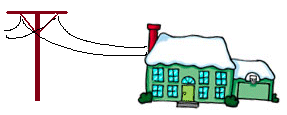The Internet has millions of domain names, but each domain name must be unique, i.e. no two domains should have the same name. Therefore there must be an independent organization to control this huge list of domain name, guarantees that each domain name must be unique. Network Solutions is the organization that responsible to maintain this huge list of domain name.
Let’s have some Internet backgrounds before introducing the process of how a new domain is born.
Introduction to Domain Name
Some years ago, Network Solutions was the only organization that can register domain names. In order not to let Network Solutions to monopolize the domain name market, the American government in 1999 decided to allow some organizations ( called registrars) also able to register domain name in 1999. At the beginning of year 2001, the world has about 80 registrars, distributes in the US, Europe, Asia, and so on…. Below is approximately the distributed registrars around the world:
- Australia – 3 registrars
- Canada – 4 registrars
- China – 3 registrars
- Europe (France , Germany, Italy, etc…) – 20 registrars
- Japan – 3 registrars
- Korea – 4 registrars
- USA – 40 registrars
However Hong Kong do not has any registrar. Therefore Hong Kong residence must be registered domain names from registrars in China or other countries. You may consider to register domain names from China registrars. Here’s the information of China registrars :
- Eastern Communications Co. Ltd.
- pAsia, Inc.
But, in order to guarantee that there is no any duplicate domain name on the Internet, Network Solutions is still responsible to maintain this huge list of domain names. The money you pay to register domain names, mainly pay to registrars and Network Solutions to maintain your domain names.
Registration Procedures of a New Domain Name
Below is the process how a new domain name is registered or born:
- We receive your registration information (name, address, email address, telephone, and so on..) and domain name payment.

2. We inquire or query your domain name to our partner registrars whether this is a new domain name or not. If this is a new domain name, we will then submit your domain name and your registration information to our partner registrar, requests them to register your domain name immediately.

3. During the process of domain name registration. Besides your registration information, some important information is also required to register your domain name. This important information is the name servers (Domain Name Servers), usually called DNS.
All domain name must has two DNS ( Primary Name Server and Secondary Name Server) for successful registration.
If you use the web hosting service from other companies, you must ask them their DNS information, then fills in their Primary Name Server and the Secondary Name Server information in the registration form.
If the web hosting do not willing to provide their DNS information to you, never use this company.
Of course if you register domain names through MyGreatName.com, you do not need to fill in the DNS information. We will provide two DNS to you for free.
4. When the registrar receive all the domain name information. If this is really a new domain name, your domain name will be added to the domain list of Network Solutions. Therefore other people cannot register this domain name again.
5. If you use our DNS, we will add your domain name zone file ( SOA, ‘A’ Record 及 ‘MX’ Record, etc..) into our two nameservers (Primary Name Server and Secondary Name Server)
If the domain name zone file did not add to the two nameservers, all visitors on the Internet can never find your domain name!

6. Network Solutions afterwards will add your domain name information (for example: domain name, nameservers, your name, address, telephone, and so on…) to their central database. Network Solutions is responsible to maintain this central database. This central database is called the whois database. When you use our website to check the availability of domain name, our domain script will connect and send query to the WHOIS database.
7. Then, your domain name information (e.g. domain name, nameservers, etc…) will add to the “upper level Network Nameservers” called root domain name servers. Root nameservers have COM root nameserver, NET root nameserver, ORG nameserver, etc…..
8. The nameservers on the Internet are all connected and will sharing and updating information with each others. The information of your new domain name is actually “diffuse” from one nameserver to other nameservers on the Internet. This “diffuse” process is called propagation.
9. When the information of your domain name is propagating to other nameservers, your domain name will become activate on the Internet. A new domain name may require a few hours to a few days to activate on the Internet.

Leave a Reply